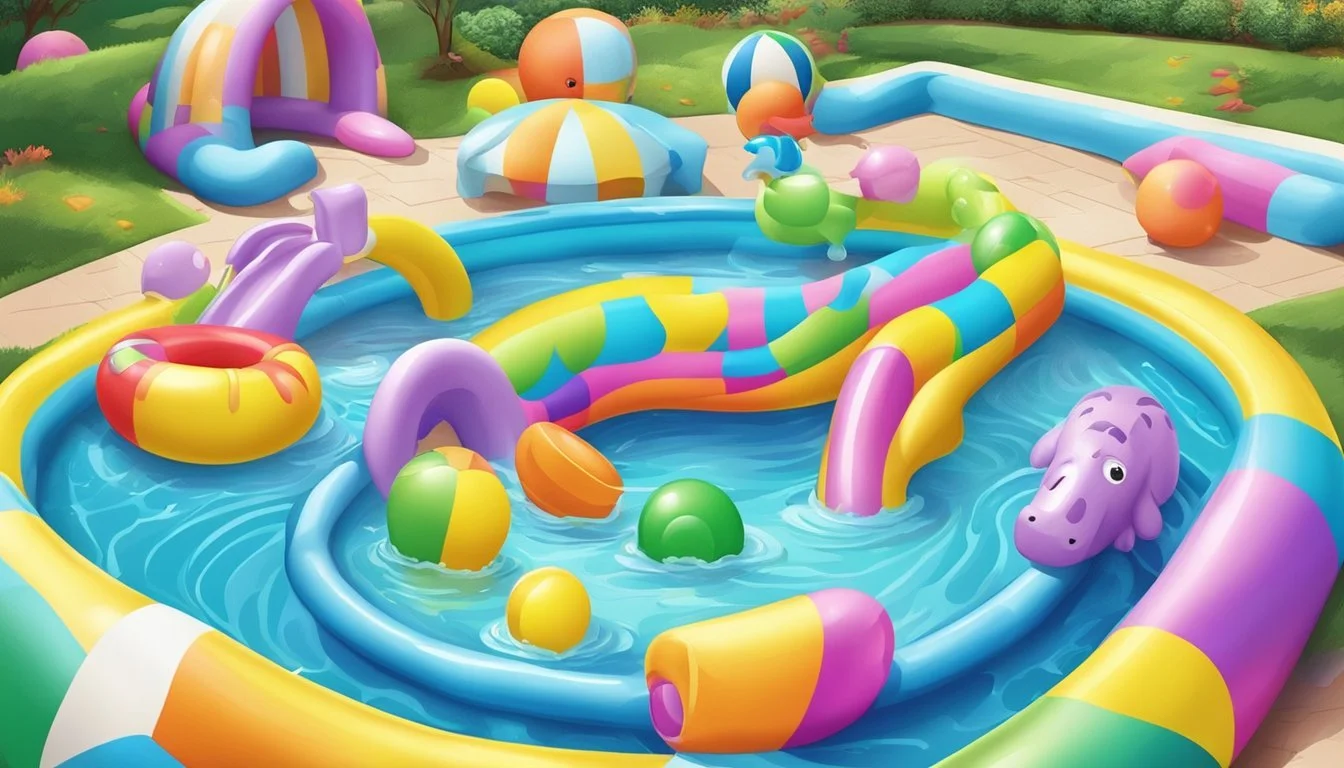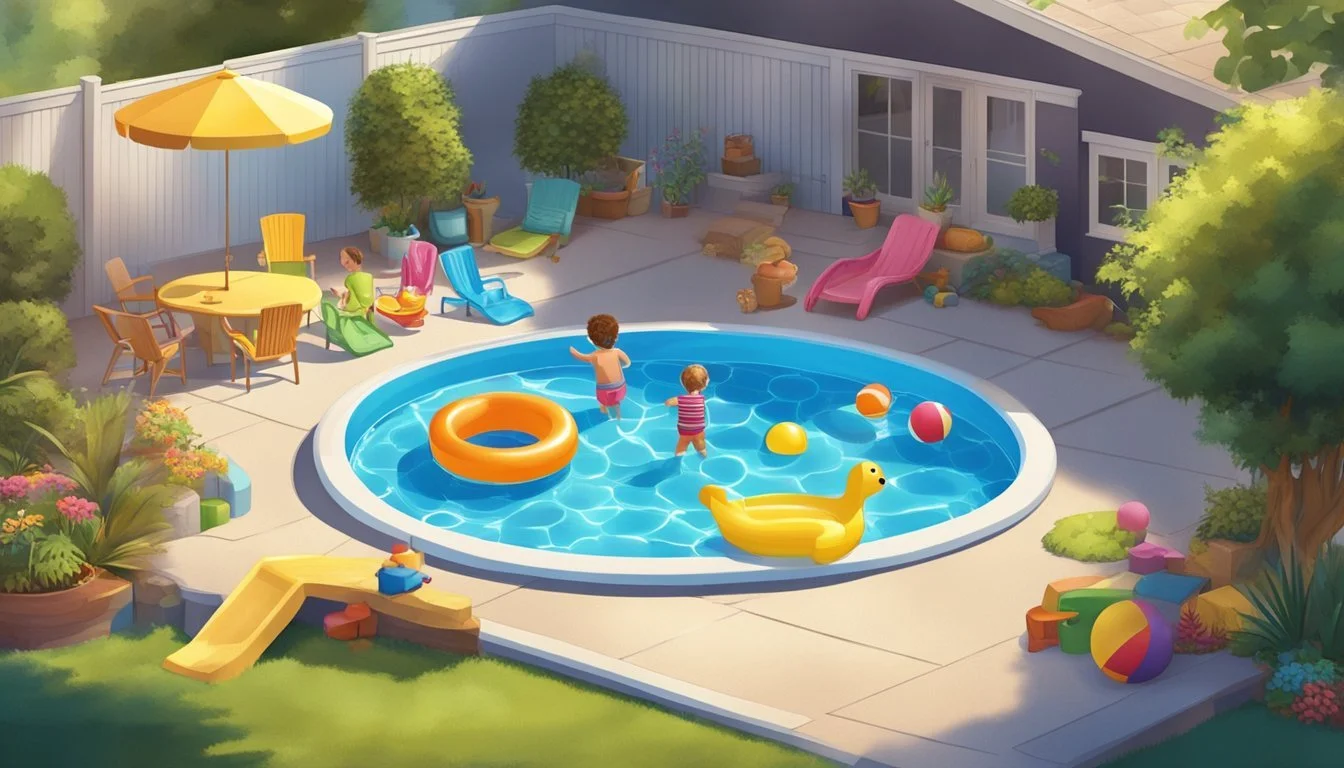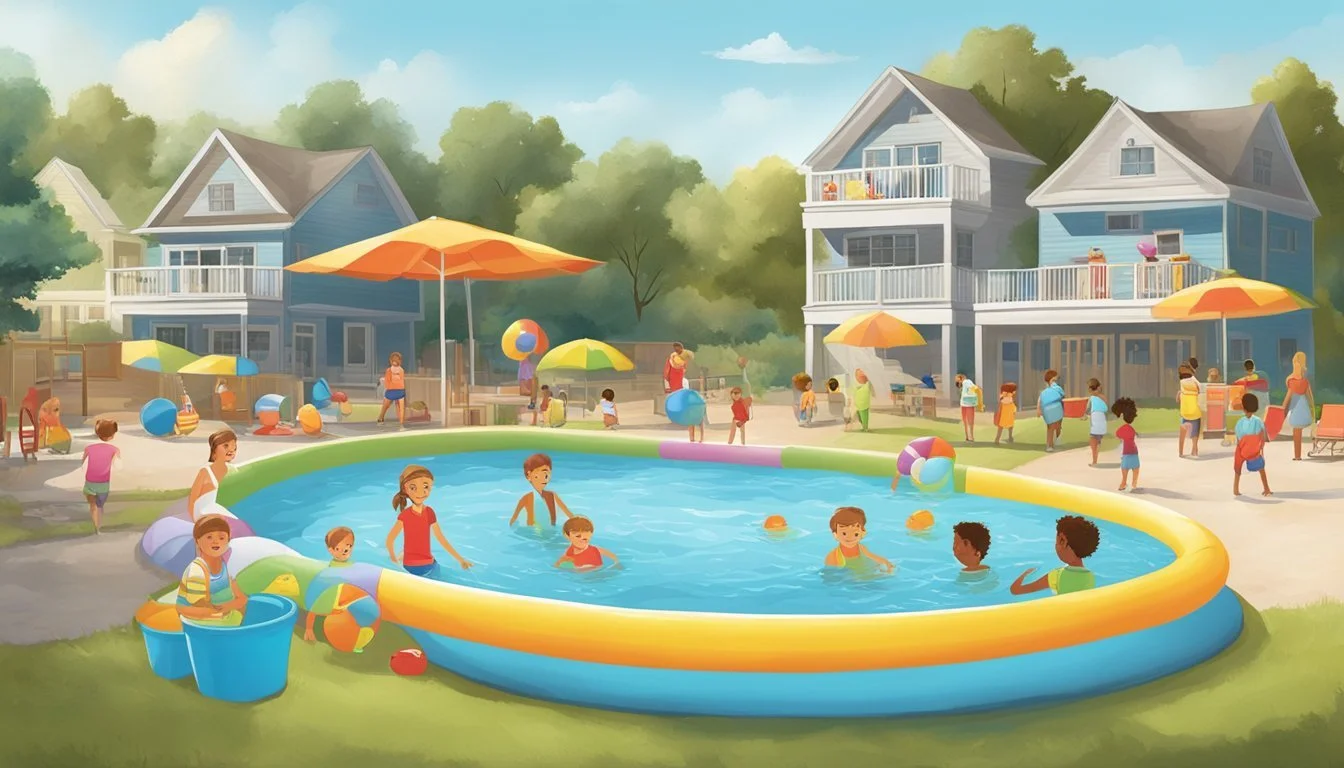Find Your Perfect Lucky Kiddie Pool for Summer Fun
Top Summer Cooling Option for Families
Summer heat calls for cool relief, and a lucky kiddie pool can provide just that for children and families. These portable pools come in various sizes and styles, offering a refreshing oasis right in the backyard. From inflatable options to sturdy plastic designs, kiddie pools cater to different age groups and preferences.
A well-chosen kiddie pool can transform a hot summer day into a fun-filled adventure for kids and toddlers alike. These compact swimming pools allow children to splash, play, and cool off without the need for a full-sized pool. Parents appreciate the convenience and safety features of modern kiddie pools, which often include durable materials and easy-to-use drain systems.
When selecting a lucky kiddie pool, consider factors such as size, material, and special features. Some pools come with built-in seats or playful designs that add extra excitement for young swimmers. With proper supervision and maintenance, a kiddie pool can become a cherished part of summer memories for years to come.
Understanding Kiddie Pools
Kiddie pools offer a fun and refreshing way for young children to cool off during hot summer days. These portable water play areas come in various designs, materials, and sizes to suit different needs and preferences.
Types of Kiddie Pools
Inflatable pools are a popular choice for their portability and easy storage. They can be quickly inflated and filled with water, providing instant fun for kids. Plastic pools offer more durability and stability. These hard-sided pools are often molded into fun shapes or designs.
Portable frame pools provide a sturdier option, with a metal frame supporting a vinyl liner. These can accommodate larger groups of children or even adults. Some kiddie pools feature built-in sprayers or slides for added excitement.
Material and Durability
Most kiddie pools are made from PVC, vinyl, or durable plastics. Inflatable pools typically use reinforced PVC to resist punctures. Hard plastic pools offer excellent durability but may crack if mishandled.
Higher-quality pools often feature UV-resistant materials to prevent fading and deterioration from sun exposure. Some pools incorporate multiple layers of material for added strength.
Proper care and storage can significantly extend a kiddie pool's lifespan. Cleaning and drying the pool after each use helps prevent mold and mildew growth.
Safety Features
Many kiddie pools include safety features to protect young swimmers. Non-slip surfaces on the pool bottom reduce the risk of falls. Some models have cushioned floors for added comfort and safety.
Rounded edges and soft inflatable sides minimize the risk of injuries from impacts. Certain pools feature separate compartments or designated shallow areas for younger children.
It's crucial to supervise children at all times when using kiddie pools. Proper water depth management is essential, typically keeping water levels at 1-2 feet for toddlers and young kids.
Choosing the Right Kiddie Pool
Selecting an ideal kiddie pool involves considering size, features, price, and brand quality. These factors help ensure a fun and safe water play experience for little ones in the backyard.
Size Considerations
Kiddie pool sizes vary widely to accommodate different age groups and spaces. For infants and toddlers, a small pool with a diameter of 3-4 feet is often sufficient. Larger pools, around 5-6 feet, suit older children and allow for more movement.
Always measure your outdoor area before purchasing. Leave ample space around the pool for safety and accessibility. Consider the number of children who will use the pool simultaneously.
Some pools feature separate compartments or play areas. These designs can be great for families with children of different ages.
Additional Features
Many kiddie pools offer more than just a place to splash. Some include built-in slides, sprayers, or water fountains for added fun. Inflatable play centers, like the Intex Rainbow Ring, combine a pool with various activities.
Shade canopies protect sensitive skin from sun exposure. Look for pools with removable sunshades for versatility.
Safety features are crucial. Non-slip surfaces on the pool bottom prevent accidents. Sturdy walls provide stability, especially for inflatable models.
Some pools come with accessories like small inflatable toys or beach balls. These extras can enhance playtime without additional purchases.
Price and Value
Kiddie pool prices range from budget-friendly to more expensive options. Basic models, like the Intex Crystal Blue Inflatable Pool, are affordable and functional. Higher-end pools with additional features naturally cost more.
Consider durability when assessing value. A pricier pool that lasts multiple seasons may be more economical than replacing a cheaper one annually.
Look for sales, especially at the end of summer. Many retailers, including Target, offer discounts on their pool collections.
Factor in maintenance costs. Some pools require specific cleaning products or replacement parts, which can affect long-term value.
Brand and Quality
Reputable brands often provide better quality and customer support. Intex is a well-known name in the kiddie pool market, offering a wide range of options.
Read customer reviews to gauge product satisfaction and longevity. Pay attention to comments about ease of setup, durability, and any recurring issues.
Check warranty information. A good warranty can provide peace of mind and protect your investment.
Quality materials make a difference. Look for thick, puncture-resistant vinyl in inflatable pools. Hard plastic pools should be sturdy and UV-resistant to prevent fading and cracking.
Setting Up Your Kiddie Pool
Proper setup is crucial for a safe and enjoyable kiddie pool experience. Choosing the right location, correctly inflating and assembling the pool, and maintaining cleanliness are key steps to ensure hours of summer fun.
Location Selection
Pick a flat, level area in your backyard for the kiddie pool. Avoid slopes or uneven ground that could cause water to accumulate on one side. Choose a spot with some shade to protect children from excessive sun exposure. Keep the pool away from trees to minimize debris falling into the water.
Ensure the chosen area has easy access to a water source for filling. Consider proximity to the house for convenient supervision. Check for any sharp objects or rocks on the ground that could damage the pool's bottom.
Place the pool on grass or a soft surface rather than concrete to provide cushioning. If using the pool on a deck, verify it can support the weight of the filled pool.
Inflation and Assembly
For inflatable pools, use an electric pump for quick and easy inflation. Follow the manufacturer's instructions carefully to avoid over-inflation. Check all valves are securely closed after inflating.
Assemble any additional components like frames or supports according to the product manual. Ensure all parts are properly connected and stable before adding water.
Spread out the pool evenly and smooth out any wrinkles. For larger pools, it may help to have a second person assist with this step. Double-check that the pool is level before filling.
Fill the pool with water to the recommended level, typically a few inches below the rim. Use a garden hose with clean water. Consider using a water filter if filling from a non-potable source.
Maintenance and Cleaning
Empty and refill the pool with fresh water every 1-2 days to maintain hygiene. For longer use, treat the water with pool chemicals designed for small pools.
Clean the pool regularly with mild soap and water. Scrub gently to remove any algae or buildup. Rinse thoroughly before refilling.
Cover the pool when not in use to keep out debris and insects. Store portable pools indoors or in a protected area during bad weather or extended periods of non-use.
Inspect the pool regularly for any tears, leaks, or damage. Repair small holes promptly with a pool patch kit to prevent further damage.
Drain the pool completely at the end of the season. Clean, dry, and store it properly to ensure it's ready for next summer's fun.
Kiddie Pool Activities
Kiddie pools offer endless possibilities for fun, learning, and memorable summer experiences. From splashing games to educational activities, these portable play areas keep kids entertained while beating the heat.
Water Games
Fill the kiddie pool with water and colorful plastic balls for a mini ball pit adventure. Kids can practice counting as they collect balls in buckets or with their arms. For a twist on classic pool games, try "Duck, Duck, Splash" where children sit around the edge and tap heads until choosing someone to splash. Create a simple obstacle course using pool noodles, floating toys, and hula hoops for little ones to navigate through the water.
Encourage toddlers to practice motor skills by fishing for toy boats or rubber ducks with small nets. Set up a target practice game using empty plastic bottles as pins and soft sponge balls as "bowling balls." This activity improves aim while keeping everyone cool.
Educational Play
Transform the kiddie pool into a floating classroom. Write numbers on upside-down Frisbees and place them in the water. Kids can toss sponges with math equations onto the correct answer, combining learning with splashy fun. For younger children, use foam letters to spell simple words or practice alphabet recognition.
Create a sensory experience by filling the pool with water beads, ice cubes, or water-safe kinetic sand. This tactile play stimulates the senses and encourages exploration. Use the pool as an outdoor art studio, filling it with washable paints and large pieces of paper for mess-free creativity.
Set up a science experiment station, demonstrating concepts like buoyancy with various objects. Children can predict which items will float or sink, then test their hypotheses in the water.
Pool Parties
Host a themed kiddie pool party to elevate summer fun. For a tropical luau, decorate with inflatable palm trees and provide lei necklaces. Serve fruit smoothies in coconut cups for a refreshing treat. Organize a pirate-themed adventure with treasure hunts in the pool, using waterproof clues and plastic gold coins.
Set up a poolside snack bar with frozen fruit pops, watermelon slices, and other cool treats. Create a cozy reading nook near the pool with waterproof cushions and beach umbrellas for story time breaks. Introduce water-safe musical instruments like plastic maracas or waterproof drums for a poolside concert.
End the party with a bubble bonanza, using large wands to create giant bubbles that float across the water's surface. This magical finale will leave little ones with lasting summer memories.
Safety and Supervision
Ensuring a safe and enjoyable experience in kiddie pools requires vigilant supervision, sun protection, and proper hygiene practices. These key elements help protect little ones from potential hazards while maximizing summer fun.
Supervision Guidelines
Never leave children unattended in or around kiddie pools. An adult should always be within arm's reach of toddlers and young children. Designate a responsible "water watcher" to maintain constant visual contact with kids in the pool. This person should avoid distractions like phone use or conversations.
Teach basic water safety rules to children. These include no running around the pool, no diving in shallow water, and no pushing or rough play. Establish clear entry and exit points for the pool. Consider using flotation devices for non-swimmers, but remember these are not substitutes for supervision.
Keep rescue equipment nearby, such as a reaching pole or life ring. Learn CPR and basic first aid skills to be prepared for emergencies. Remove toys from the pool area when not in use to prevent children from being tempted to enter unsupervised.
Sun Protection
Apply broad-spectrum sunscreen with an SPF of at least 30 to all exposed skin before pool time. Reapply every 2 hours or after swimming. Use water-resistant formulas for longer-lasting protection.
Dress kids in UV-protective swimwear, including rash guards and swim shirts. These provide continuous sun protection without the need for frequent reapplication.
Provide shaded areas near the kiddie pool using umbrellas, canopies, or natural shade from trees. Encourage regular breaks in the shade, especially during peak sun hours (10 am to 4 pm).
Protect eyes with UV-blocking sunglasses and heads with wide-brimmed hats. Stay hydrated by offering plenty of water throughout pool play sessions.
Pool Hygiene
Empty and clean kiddie pools after each use to prevent bacterial growth. Scrub the pool surface with a mild detergent and rinse thoroughly before refilling.
Change the water frequently, ideally daily, to maintain cleanliness. Avoid using chlorine in small kiddie pools, as it can be harsh on young skin and eyes.
Inspect the pool regularly for any damage or sharp edges. Replace worn or damaged pools promptly to prevent injuries.
Encourage children to use the bathroom before entering the pool. For younger kids, use swim diapers to prevent contamination. Teach older children not to swallow pool water.
Store the pool upside down when not in use to prevent water accumulation and mosquito breeding. Keep the pool area free of food and drinks to discourage insects and animals.






